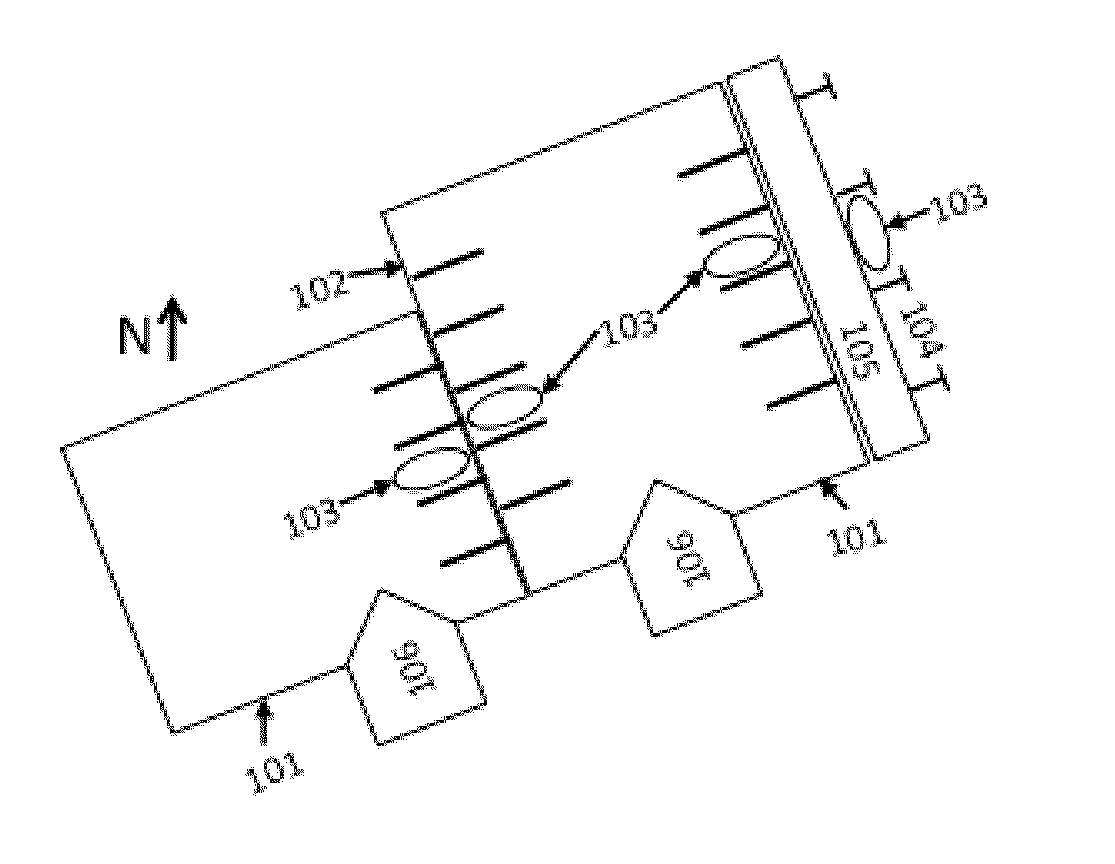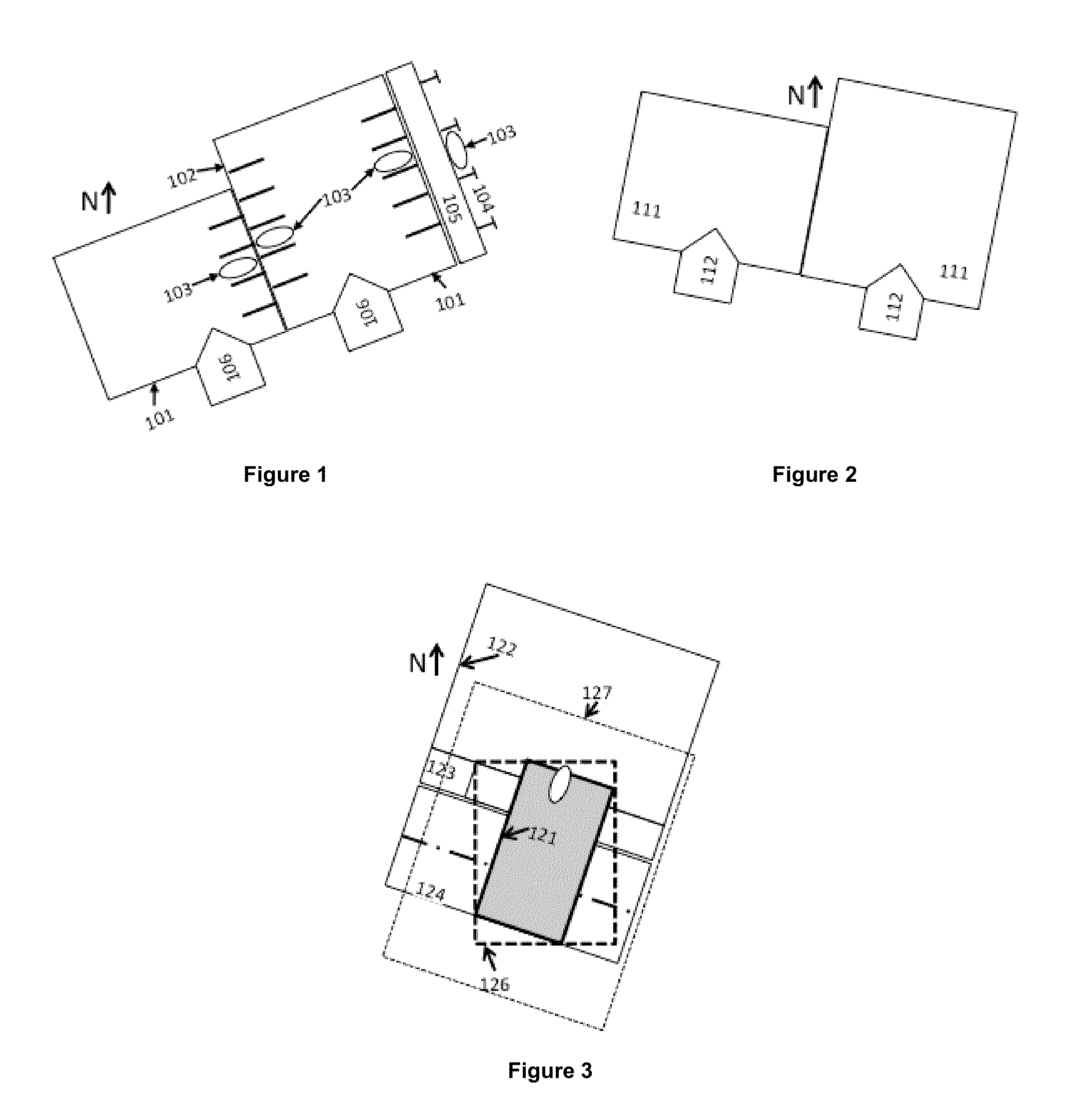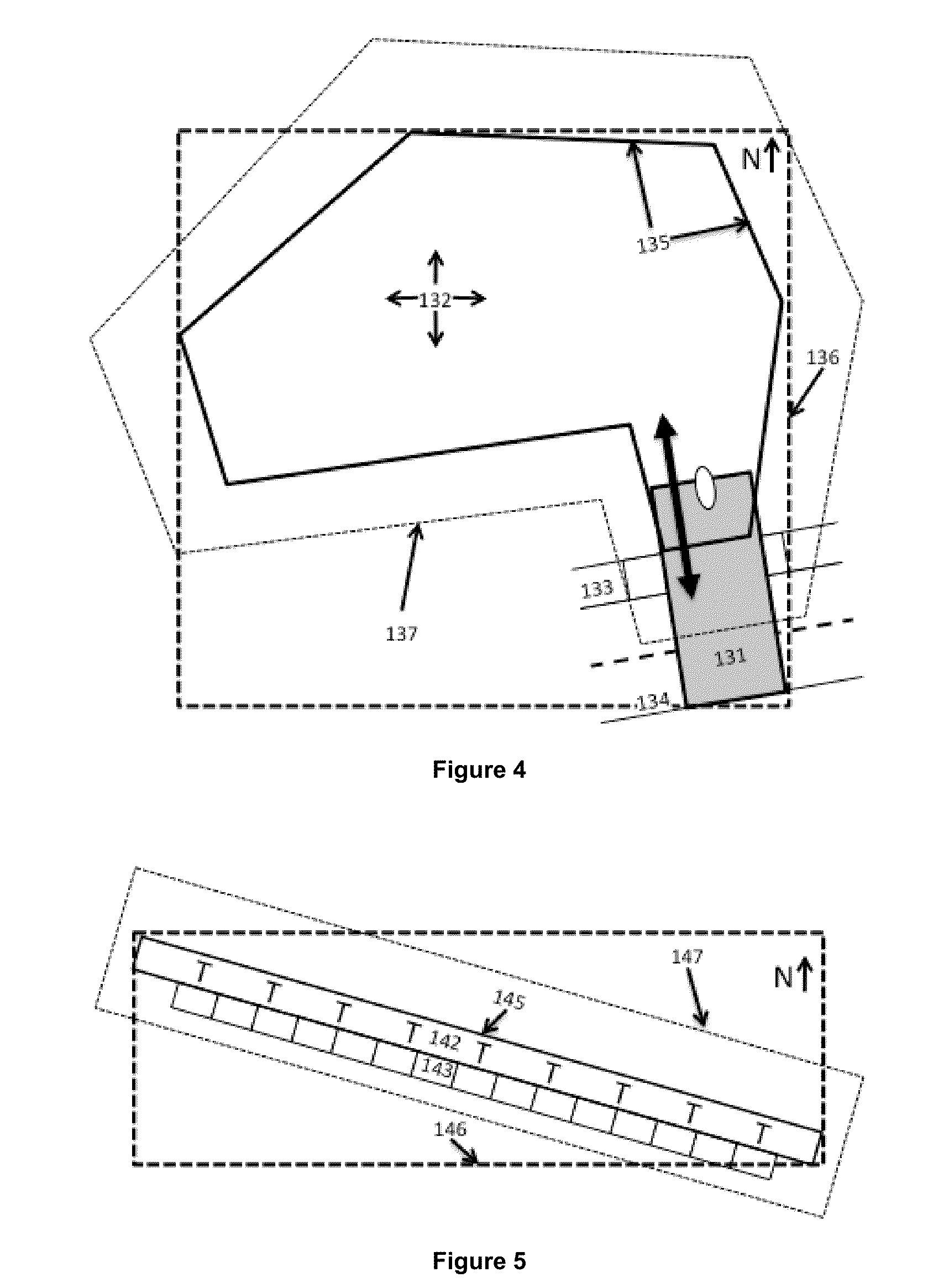Method of using virtual gantries to optimize the charging performance of in-vehicle parking systems
a charging system and virtual gantry technology, applied in the field of vehicle charging methods and systems, to achieve the effect of improving charging performan
- Summary
- Abstract
- Description
- Claims
- Application Information
AI Technical Summary
Benefits of technology
Problems solved by technology
Method used
Image
Examples
Embodiment Construction
[0068]In the case of GNSS, tall buildings and other earth-surface features can cause signal reflections, radio-shadows and in the particular case of parking garages, the number of satellites in view (NSV) may decline to a very small number, possibly zero, depending on receiver technology, implying loss of positioning in the absence of additional techniques. As FIGS. 1 and 2 illustrate, there are several ways that these errors can result in mischarging for parking. As shown in FIG. 1, it is possible for two surface lots 101 to share a boundary 102 such that vehicles 103 parking in one lot could be mistakenly identified by a wireless location system as parking in the other one. Similarly, a surface lot 101 might be positioned adjacent to a block-face of street parking spots 104, where adjacent might mean separated only by a sidewalk 105 of 1.5 to two meters in width in an environment where 5 m or 10 m positioning errors are common. This can contribute to an erroneous billing assignmen...
PUM
 Login to View More
Login to View More Abstract
Description
Claims
Application Information
 Login to View More
Login to View More - R&D
- Intellectual Property
- Life Sciences
- Materials
- Tech Scout
- Unparalleled Data Quality
- Higher Quality Content
- 60% Fewer Hallucinations
Browse by: Latest US Patents, China's latest patents, Technical Efficacy Thesaurus, Application Domain, Technology Topic, Popular Technical Reports.
© 2025 PatSnap. All rights reserved.Legal|Privacy policy|Modern Slavery Act Transparency Statement|Sitemap|About US| Contact US: help@patsnap.com



